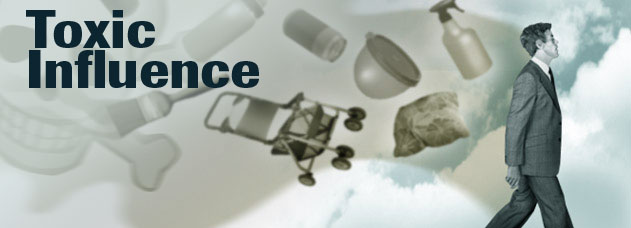Um relatórito memorável da Environmental Protection Agency/EPA (nt.: a Agência de Proteção Ambiental, órgão federal que trata dos temas ambientais dos EUA) concluiu que crianças expostas a substâncias tóxicas podem desenvolver deficiências de apredizado, asma e outros problemas de saúde, vem sendo indefinidamente posto de lado em meio a uma feroz oposição feita pela indústria química.
(By Sheila Kaplan)
http://investigativereportingworkshop.org/
America’s Children and the Environment, Third Edition (http://www.epa.gov/ace/ace3draft/index.html), é uma análise séria de como os poluentes se acumulam nos corpos em desenvolvimento das crianças e o dano que eles podem lhes infligir.
O relatório não foi publicado, mas foi postado no ‘website’ da EPA na forma de projeto em março de 2011, marcado “não cotar nem citar”. Foii ferozmente contestado pela indústria química e faz referência ao Escritório de Administração e Orçamento da Casa Branca (nt.: White House Office of Management and Budget/OMB), onde está até agora mofando.
Pela primeira vez desde que a EPA começou esta série ACE (nt.: America’s Children and the Environment – As Crianças Norte-americanas e o Ambiente), em 2000, a minuta cita pesquisa extensiva contectando poluentes químicos comuns a danos cerebrais e desordens no sistema nervoso de fetos e de crianças. Também levanta questões preocupantes quanto ao grau a que as crianças estão expostas a estes produtos químicos perigosos no ar, na água potável e no alimento, como também sobre as exosições em seus ambientes internos – incluindo escolas e creches – e através dos solos contaminados.
In the making since 2008, the ACE report is based on peer-reviewed research and databases from federal agencies, including the Food and Drug Administration, Housing and Urban Development and the Centers for Disease Control and Prevention. Public health officials view it as a source of one-stop shopping for the best information on what children and women of childbearing age are exposed to, how much of it remains in their bodies and what the health effects might be. Among the “health outcomes” listed as related to environmental exposures are childhood cancer, obesity, neurological disorders, respiratory problems and low birth weight.
The EPA’s website still notes that the report will be published by the end of 2011. But after a public comment period that was marked by unusually harsh criticism from industry, additional peer review and input from other agencies, the report landed at OMB last March, where it has remained. No federal rule requires the OMB to review such a report before publication, but an EPA spokeswoman said the EPA referred it to the OMB because its impact cuts across several federal agencies.
The spokeswoman said the agency had no idea when OMB would release it, allowing publication. Neither agency would discuss what changes had been made to the draft.
Some present and former EPA staffers, who asked not to be named for fear of losing their jobs, blamed the sidetracking of the report on heightened political pressure during the campaign season. The OMB has been slow to approve environmental regulations and other EPA reports throughout the Obama Administration — as it was under George W. Bush, according to reports by the Center for Progressive Reform, a nonprofit consortium of scholars who do research on health, safety and environmental issues.
“Why is it taking so long? One must ask the question,” said a former EPA researcher who works on children’s health issues. “It is an important document and it strikes me that it’s falling victim to politics.”
The EPA states that the report is intended, in part, to help policymakers identify and evaluate ways to minimize environmental impacts on children. That’s an unwelcome prospect to the $674 billion chemical industry, which stands to lose business and face greater legal liability if the EPA or Congress bans certain substances mentioned in the report or sets standards reducing the levels of exposure that is considered safe.
Among other findings, the report links numerous substances to ADHD, including certain widely available pesticides; polychlorinated biphenyls (PCBs), which were banned in 1979 but are still present in products made before then and in the environment; certain polybrominated diphenyl ethers (PBDEs), used as flame retardants; and methyl mercury, a toxic metal that accumulates in larger fish, such as tuna. The draft also cites children’s exposure to lead, particularly from aging lead water pipes, as a continuing problem (See Toxic Taps.)
Among the other widespread contaminants linked to learning disabilities is perchlorate, a component of rocket fuel, fireworks and other industrial products, which has polluted water around the country. The Department of Defense, which wants to avoid paying to clean it up, is alarmed by research showing that the chemical interferes with thyroid function and otherwise damages the nervous system, according to R. Thomas Zoeller, a biology professor at the University of Massachusetts Amherst, and an expert on perchlorate, who has served on EPA advisory panels studying toxic chemicals. The Air Force is so concerned about the issue that it hired two contractors, Richard D. Mavis and John N. Sesso, who in 2009 defended the chemical in a letter to the prestigious journal Environmental Health Perspectives, which had published an EPA scientist’s study noting that perchlorate impaired brain function.
One of the new sections of the report notes that children may be widely exposed to pollutants in schools and day-care centers. Among them are pesticides; lead; PCBs; asbestos, a mineral fiber long used as insulation and fire-proofing; phthalates, chemicals that are used to soften vinyl and as solvents and fixers, and are found in numerous consumer goods, among them: toys, perfumes, medical devices, shower curtains and detergents; and perfluorinated chemicals, which are used in non-stick and stain-proof products. The study notes that these substances are variously associated with asthma, cancer, reproductive toxicity and hormone disruption.
The American Chemistry Council (ACC) , the chief industry trade group, has accused EPA of lacking objectivity and vilifying its products. It has filed dozens of pages of comments accusing the EPA of ignoring certain studies — including some funded by ACC itself — that would help businesses make the case that their products are safe. The ACC also contends that the EPA has not included enough positive comments about the role of chemicals in society.
“ACC members apply the science of chemistry to make innovative products and services that make people’s lives better, healthier and safer,” wrote ACC senior toxicologist Richard A. Becker. … “The exclusive focus on exposure is particularly problematic as it may lead to the incorrect conclusion that exposure to chemicals (e.g. phthalates) at any level is not only cause for concern, but also a direct source of negative health effects.”
Becker also expressed the ACC’s contention that EPA was painting too bleak a picture of children’s health in America.
“It is troubling that the draft ACE report seems to make such little effort to provide a complete overall picture of child health in the United States,” Becker wrote. “For example, the draft report does not refer to The Health and Well-Being of Children: A Portrait of States and the Nation … which concludes the health and well-being of children in the U.S. is improving overall with 84.4% of children in the United States listed as being in excellent or very good health, an increase from 83% in 2003.” Other ACC members, representing manufacturers of BPA, phthalates and other substances, also weighed in against the report.
Nsedu Witherspoon, executive director of the Children’s Environmental Health Network and a member of the EPA Children’s Health Protection Advisory Committee, which oversaw the report, called it a major accomplishment, reflecting the explosion of science since the first ACE was published. She also praised EPA chief Lisa Jackson for standing behind it.
Industry critics, Witherspoon said, “in many cases are the same ones out there trying to debunk the original research,” that the study cites.
Rena Steinzor, a professor at the University of Maryland School of Law and president of the Center for Progressive Reform, said the ACE report need not have gone to OMB for review in the first place. Steinzor notes that Executive Order 12866 states that proposed significant regulations — generally defined as those that could cost more than $100 million — need be reviewed by OMB, but studies do not. The Executive Order gives OMB up to 60 days to review such proposals — although it allows for extensions. In practice, OMB has missed numerous such deadlines. But the ACE report, which is not a proposed regulation, falls into a gray area.
“If it’s not a rule, I don’t know what it’s doing there,” Steinzor said. “And even if it were a rule, there would be a deadline, and they’d be violating it.”
In an email statement to the Investigative Reporting Workshop, EPA spokeswoman Julia Valentine said, “The report was provided to OMB so that they could conduct an interagency review process to ensure accuracy and consistency.” She noted that because the report addresses children’s health, it includes issues that are the focus of many departments and agencies within the Department of Health and Human Services — including the Centers for Disease Control, the Food and Drug Administration, the National Institute of Environmental Health Sciences and the National Cancer Institute.
Steinzor, whose organization has studied OMB under numerous presidents, doesn’t buy it.
The report should be released now, she said, “because to protect children adequately we need all the information we can get … I guess I understand why there was great anxiety and paranoia before the election … (but) why would you not do it now? It’s sad that things have gotten so polarized that we’re afraid to release scientific information.”



